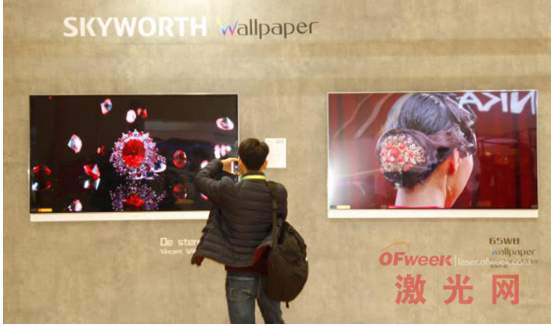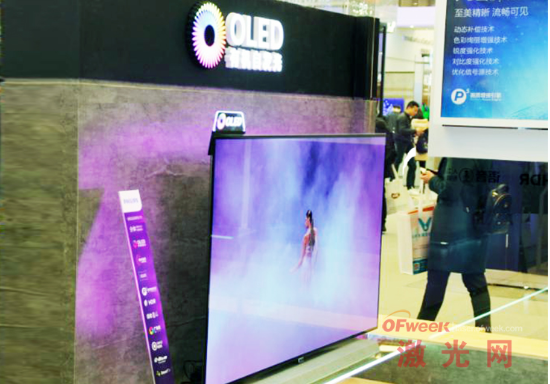With the gradual improvement of domestic technology and consumption levels, residents' demand for lighter, thinner, large-size TVs is increasing. In order to seize the high competitive advantage of the TV market in the future, many TV manufacturers at home and abroad, represented by Samsung, LG, Hisense, and TCL, have chosen different directions to invest heavily. At present, quantum dot TVs, OLED TVs, and laser TVs have been formed. The three main camps.

Manufacturers represented by Samsung and TCL have chosen to bet on the direction of quantum dot technology and have invested heavily in this direction. Quantum dot technology is an iterative upgrade of the current liquid crystal display technology. A quantum dot film is attached to the back of the liquid crystal panel to achieve an improvement in the color gamut of the liquid crystal panel, and it has an advantage over OLED in terms of service life. Because the quantum dot film is very light and thin, there is no need to make large-scale adjustments to the existing LCD panel production line. It can be quickly launched to achieve mass production. While efficient conversion, its transformation cost will be compared with the other two development directions. A lot cheaper.
In addition, since the production cost of quantum dot TVs is not very high, compared with traditional liquid crystal display methods, the display enhancement effect is also obvious. The price of this new type of TV is relatively close to the people. Therefore, for the time being, Samsung and Under the vigorous marketing promotion of TCL, its market acceptance is fairly good.
Manufacturers represented by LG and Skyworth have chosen OLED as the next-generation choice. The display principle of OLED TVs is quite different from that of traditional liquid crystal displays. Compared with traditional liquid crystal displays, OLED is a more advanced display technology that uses the principle of self-luminescence. This light-emitting method allows OLED TVs to be made thinner and lighter, and has obvious advantages in flexible display. Compared with traditional display methods, OLED has many advantages such as wide color gamut space, high contrast, high response speed, and low power consumption. It is also the darling of the current high-end color TV market.

In terms of price, large-screen OLED TVs have an obvious disadvantage. Since the market is still in the incubation stage, the public lacks sufficient awareness of them, and most of them hold a conservative wait-and-see attitude. In addition, the cost of OLED production technology is high, and the price is much higher than that of traditional liquid crystal displays. Therefore, the biggest obstacle for its market breakthrough is the price.
Domestic manufacturers led by Hisense and Changhong have taken laser projection display as a key development direction. Strictly speaking, laser TV has completely subverted our previous impression of TV. Laser TV is composed of laser projection and special receiving screen. The working principle is to use a semiconductor pumped solid-state laser working material to generate red, green, and blue wavelength lasers as the light-emitting source, and then control the laser light-emitting source to scan the image through TV signals.
In theory, the color gamut coverage of laser TV can reach more than 90% of the color gamut of the human eye. Compared with the current 60% color gamut coverage of ordinary LED TVs, it has been greatly improved. The improvement of color purity makes the contrast of image display higher and the color display becomes more abundant, which can be intuitively felt visually. Laser TV also overcomes the discomfort caused by human eyes watching the fluorescent color produced by phosphors for a long time, and there is no radiation to human eyes, which also greatly improves the use experience of laser TV.
According to published data, the scale of laser TV market sales reached 67,000 units in 2017, with sales of 2.08 billion yuan, achieving growth rates of 116% and 109%, respectively. Compared with other TVs, laser TVs are currently only consumer goods belonging to a niche market due to their high prices. Due to technical limitations, laser TV projection equipment generally does not reach the 4K resolution. Even with 1080P display quality, the price of laser TVs is generally more than 10,000 yuan. However, from the data, we can also find that the laser TV has shown a significant growth trend, and the price is also continuing to drop, which will naturally help stimulate the further opening of the market.
Can the laser TV drop below 10,000 yuan be an opportunity for a breakthrough?At present, the price of laser TVs is so high that it is still unbearable for the majority of ordinary consumers. At this stage, it is mainly aimed at the high-end consumer market. However, with the efforts of many manufacturers, the price of laser TVs has been on a downward trend, and its market space is expected to be further developed.
At the end of June 2017, Xiaomi released a 150-inch laser TV. The resolution of this laser TV is 1080P. The official said that the light source brightness of this TV can reach 1500 lumens, it has 3000:1 native contrast, and the NTSC color gamut range is as high as 85%. The wall-to-wall distance is 5-50cm, which is very convenient to use.
However, the more important thing is that Xiaomi’s TV is only priced at 9,999 yuan. Although compared with traditional LCD TVs, this price is far from cheap, but as far as the status quo of the laser TV market is concerned, the price of less than 10,000 yuan does have a very high cost performance.
However, just a year after the launch of the Mijia Laser TV, the JMGO suddenly made a sound last month and launched a JMGO U1 laser TV with a 4K resolution screen. In addition to the low price of RMB 8,999, this laser TV with 4K resolution is also a highlight. At first glance, it looks very cost-effective. After all, 4K laser TVs of brands such as Hisense and Sony cost tens of thousands, even as high as 100,000 yuan.
Summary: As a brand-new imaging technology for the next generation, laser TV has incomparable advantages over traditional display methods in terms of imaging quality and experience. With the continuous maturity of related technologies, the formation of the industrial chain layout and the opening of market demand, it is believed that laser TV will have a promising future.
The Smart Screen Protector Cutting Machine can help stores reduce the inventory of Screen Protectors. It is mainly used to cut Screen Protectors such as Mobile Phone Screen Protectors, Watch Screen Protectors, Tablet Screen Protectors, Pad Screen Protectors, and personalized fashion Back Films. It is very suitable for personal business or shop drainage.
Universal Screen Protector Cutting Machine has 20000+ cloud data of different specifications and models, adopts massive cloud database, and all data is updated synchronously in the state of networking. You'll have a full range of screen protector models on one machine and cut any Screen Protector model as needed without having to stock up on Screen Protectors for various phone models. No more losing customers due to missing models.
Screen Protector Cutting Machine,Protective Film Cutting Machine,Back Sticker Cutting Machine,Phone Sticker Cutting Machine, Film Cutting Machine
Shenzhen Jianjiantong Technology Co., Ltd. , https://www.jjthydrogelmachine.com
